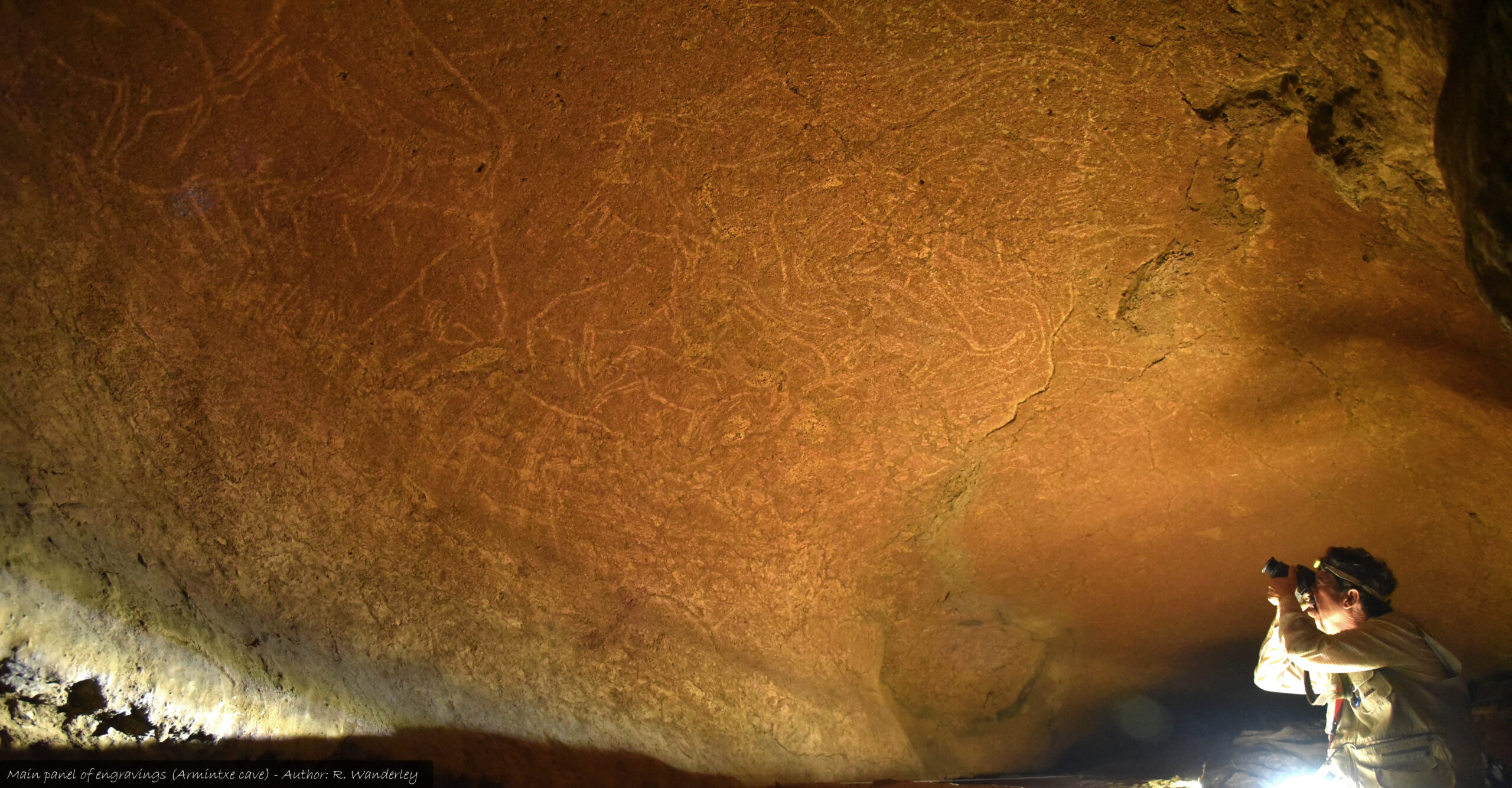Armintxe (Lekeitio, Bizkaia)

The rock art ensemble of Armintxe, exclusively made by engravings, is medium-large in size in the Cantabrian context (75 motifs or series, 37 of them animal figures), standing out for the presence of unusual motifs (3 lions, claviform signs) or unpublished in the Iberian Peninsula (bands of parallel strokes with a serrated utensil, new variants of claviform signs…). It is a unitary parietal ensemble, made by a small group of engravers in an unusually short time. This occurred around 13.7 ka BP (which could reach 14.5 ka for the ancient part or 12.5 ka for the recent part), during the recent Magdalenian.
The set, articulated in three decorated sectors and up to 15 panels, shows a notable adjustment between the geological conditions (rough, coarse-grained limestone with a layer of superficial alteration, easily attackable) and the technical decisions (scraped, wide and marginal lines, bands of parallel lines made by dragging a toothed utensil…). At the same time, it shows a correspondence between these technical decisions and the typometric features (large and regular formats of the animal figures, exhausting the manual field), and also with the formal features of these, simplified with respect to the art of that time in supports of smoother and more homogeneous surface, whether parietal or movable supports, with a much greater profusion of morphological details, normally expressed through fine incision.
The fit between technical decisions and formal elements, and the exhibition intentionality, is also high, evidenced by the selection of canvases high above the ground, or canvases sometimes visible from a distance and from a lower plane, which facilitates a panoramic view of the major compositions. Something that was favored by the large size of the figures and their arrangement, by the strong chromatic contrast between the reddish-brown support and the scratched line (of notable width, as corresponds to large figures, and yellowish in color), and that also It was ultimately enhanced by the geological conditions (eroded and expanded morphologies of the canvases, with few discontinuities and, even fewer, broken planes separated by edges).
A few engravers and other people who accompanied graphic creation probably coincided in Armintxe. Such presence is suggested by the selection criteria of the work spaces: the largest compositions were made in places selected for their best living and working conditions, for their relative accommodation capacity and for the wide exhibition of the canvases they offered. . Everything indicates that they are compositions designed to be seen. The presence of other participants, in addition to the engravers themselves, is reinforced by the fact that the figures best marked on the alteration layer are also those that take advantage of canvases with greater exhibition potential, or visible from greater distances and from somewhat larger spaces. .
Compositional intentionality is linked, finally, to iconographic aspects. In some spaces in Armintxe we find monothematic compositions (based on horses), compared to a larger composition, visible from the widest and flattest spaces of the cave, apparently organized on the opposition of horses and bison, and accompanied by goat figures. , some deer, up to three lion figures and a notable set of abstract signs -claviforms, some variants of these and a quadrilateral- in a deeper plane of that same ceiling. This association of animals is well known in other caves in SW Europe, and, within the Cantabrian region, it is especially recurrent during the central and advanced phases of the Magdalenian. In that period it coincides with an intensification of contacts and cultural and graphic interaction between the Cantabrian populations and those of the French SW, especially those on the northern edge of the Pyrenees (Armintxe being, currently, the clearest exponent of this phenomenon. ). An intensification that makes sense, as we argue, in a context of demographic expansion during the recent Magdalenian, which affected both regions. And it is the antithesis of the relative withdrawal, or artistic self-absorption, that is observed in the region during the Maximum Cold, with a parietal art of notable personality.

